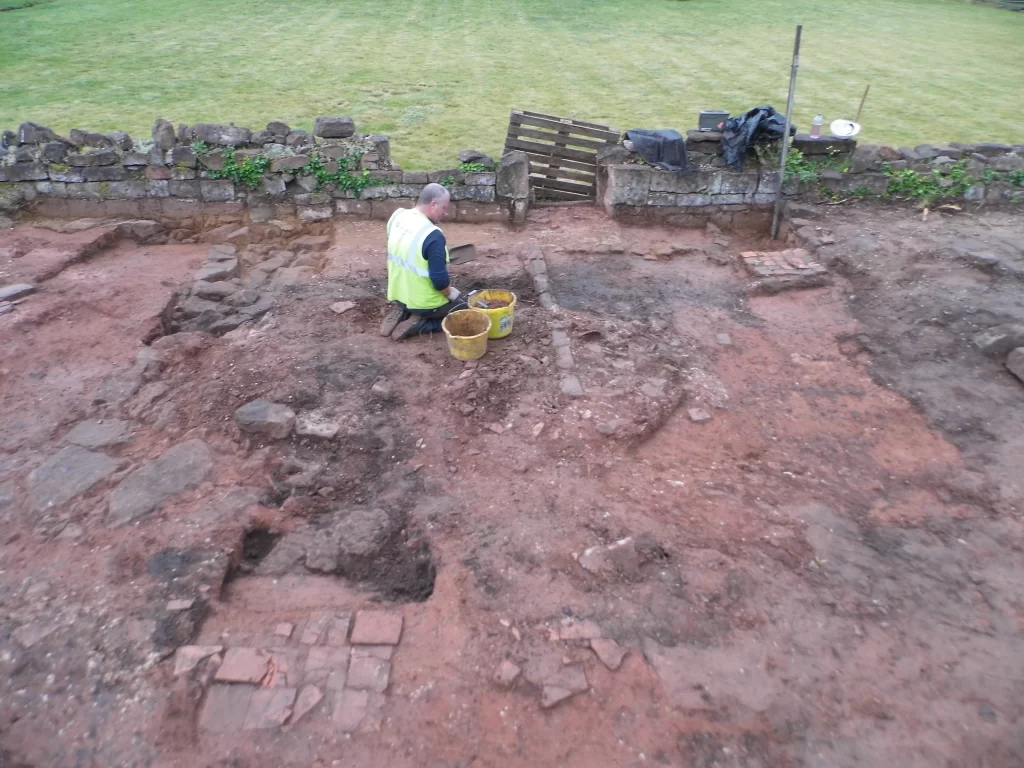The priory of St Anne (also known as the Coventry Charterhouse) is a rare example of a Carthusian monastery, one of only nine ever established in England. Founded in 1381, construction works began with King Richard II and his queen, Anne of Bohemia, laying the foundation stone for the church in 1385 and the monastery was largely completed by 1410.
Dissolved during the reign of King Henry VIII, the site ceased to function as a monastery in 1539, and entered private ownership in 1542. In 1940, its last private owner, Colonel William Wyley, bequeathed Charterhouse to the city of Coventry.
If you would like to find out more about the history of the Charterhouse please visit the Historic Coventry Trust here.
In 2019, ULAS partnered with the Historic Coventry Trust for a project to revitalise the former Carthusian monastery and reopen it to the public. Our excavations at the site formed part of a wider project, made possible with funding from the Heritage Fund, which has renovated the historic buildings, restored the walled grounds and created a visitor centre within a wider heritage park, all linked to the city via walk and cycle paths.
The site is a Scheduled Ancient Monument and has Grade I and II Listed Buildings. ULAS has been carrying out excavations and historic building surveys to assess the condition of the surviving archaeology, and has been monitoring groundworks associated with the refurbishment works.
You can read the full post here:
Coventry Charterhouse – If you want answers dig holes! – ULAS News
